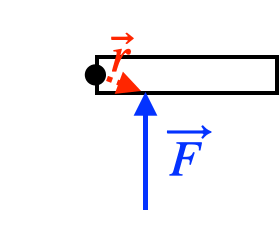14.
Torque Direction

Objects that spin in a circle can spin in two different directions, clockwise (
The direction of the torque is the direction you need to turn
so that it points in the direction of
so that it points in the direction of

Note that the direction of the torque can change if the location of the pivot changes, even though the force stays the same.
Use this quiz to practice determining the direction of a torque.